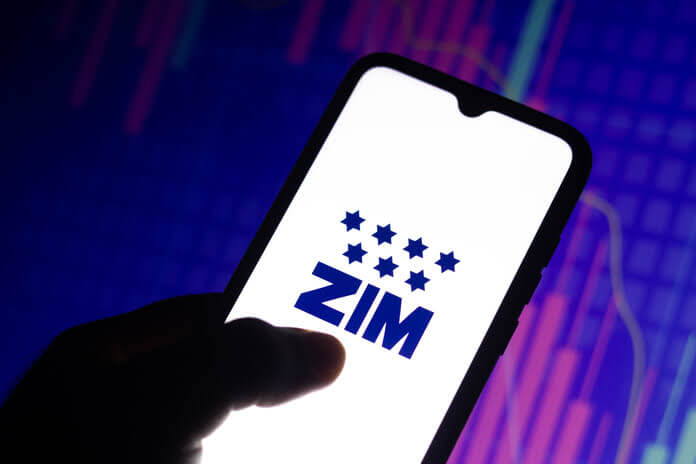ZIM Integrated Shipping Services (NYSE:ZIM) stock has lost 16% in the previous five days. Furthermore, since container freight prices have dropped dramatically, the ZIM stock price has decreased by 41% in the last six months. However, freight charges are still greater than they were before the outbreak. Furthermore, due to the port congestion caused by COVID-19, the rate of new-build vessel expansion, and environmental rules, ZIM is well-positioned to gain from current market conditions. Furthermore, 94% of its boats are chartered so that the corporation can adapt to changing market conditions. As a result, the stock remains a hold despite the recent decline in freight prices.
ZIM 2Q 2022 Highlights
ZIM reported sales of $3429 million in the second quarter of 2022, up 44% from $2382 million in the second quarter of 2021. The company’s carried volume fell 7% from 921000 TEUs in the second quarter of 2021 to 865000 TEUs in the second quarter of 2022. On the other hand, ZIM’s average freight rate climbed 54% from $2341 per TEU in 2Q 2021 to $3596 per TEU in 2Q 2022. The corporation recorded a net income of $1336 million in the second quarter of 2022, up 50% yearly. Furthermore, ZIM’s adjusted EBITDA and adjusted EBITDA margin climbed to $2101 million (up 57% YoY) and 61% (up 500 bps YoY) in the second quarter of 2022, respectively.
The company’s free cash flow grew from $851 million in the second quarter of 2021 to $1639 million in the second quarter of 2022. Furthermore, ZIM’s net cash of $509 million on December 31, 2021, became a net debt of $630 million on June 30, 2022. The firm announced a dividend of $4.75 per share for the second quarter of 2022, representing 30% of its 2Q 2022 net income and a 10% one-time catch-up from the first quarter of 2022 net income.
“We are raising our quarterly dividend distribution from 20% to 30% of quarterly net income due to our belief in ZIM’s capacity to create sustainable long-term profitability,” the CEO said. “Despite the background of many difficulties, we are reiterating our 2022 projection, which would represent another year of record earnings and profitability, based on our solid performance to date paired with spot and contract rates that remain very lucrative,” he stated.
The Market Outlook
Freight prices have been falling over the last six months. The index had dropped 39% as of August 25, 2022. Figure 2 demonstrates that freight prices on trade routes departing from Shanghai are currently much lower than they were a year ago.
Despite macroeconomic challenges, worldwide container demand in the first half of 2022 was greater than in the first half of 2019. Furthermore, worldwide demand for containers was greater at the end of June 2022 than at the end of June 2021. Moreover, port congestion caused by Covid-19-related operating interruptions will not be alleviated in the near future. Capacity at USWC port anchorages has reduced dramatically since the beginning of 2022. Furthermore, despite some progress, cargo readiness dates to destination port departure remain longer than in 2019. Furthermore, port effective capacity remains much lower than in 2019 and is not likely to grow further until 2023.
The container market has a global capacity of roughly 26 million TEUs, according to Alphaliner. In 2022 and 2023, this capacity is predicted to grow by 3% and 9%, respectively. However, due to the previously noted port congestion, a lack of landside infrastructure, and IMO 2023 environmental standards, I predict freight prices to remain high compared to pre-pandemic levels. Furthermore, 94% of ZIM’s boats are chartered. This chartering technique enables ZIM to change its fleet size in response to market conditions. It should be noted that the corporation has increased its automobile transportation operations to diversify its operations. “We anticipate this approach will continue to assist us when the market returns to pre-peak levels,” the CEO said.
Performance Outlook
Since the previous quarter, the company’s cash and equivalents had decreased by 31% to $3.3 billion in the second quarter, compared to $4.8 billion in Q1 2022, which might be attributed to recently reduced freight prices. However, it is still much greater than the $1.6 billion recorded in the same period the previous year. As a consequence of reduced cash balances, its net debt has climbed to $1.24 billion, significantly exceeding its prior amount of $(511) million in the first quarter of 2022, while ZIM’s total equity has increased by 23% to $5.24 billion in Q2 2022, compared to $4.26 billion in 1Q 2022.
Fortunately, the company’s net debt is far less than its total equity. As a result, ZIM’s financial structure presents a strong position and allows the firm to repay its debt.
Stock Value
Based on updated and analyzed ZIM valuation data and the company’s reaffirmation of its 2022 forecast, ZIM is estimated to earn about $3.5 billion in adjusted EBITDA in the second half of 2022. Assuming that its net debt remains at $1.19 billion in the first half of 2022, I estimate that the company’s fair value is roughly $39 per share. As a result, I feel the stock is a Hold.
Summary
ZIM stock is worth $39 per share, according to my analysis. As a result, at present levels, the stock is a hold. Despite the recent reduction in freight rates, the market picture for container shipping businesses is not as bleak as it appears due to global port congestion and limited adequate capacity. The firm has handsomely rewarded its shareholders in the first half of 2022, and my study indicates that ZIM can do the same in the second half of 2022. ZIM’s free cash flow is much higher than its year-to-year figure of $849 million in Q2 2021, allowing for more dividends. The stock is a hold.
Featured Image: Megapixl @Rafaelhenriquepress











